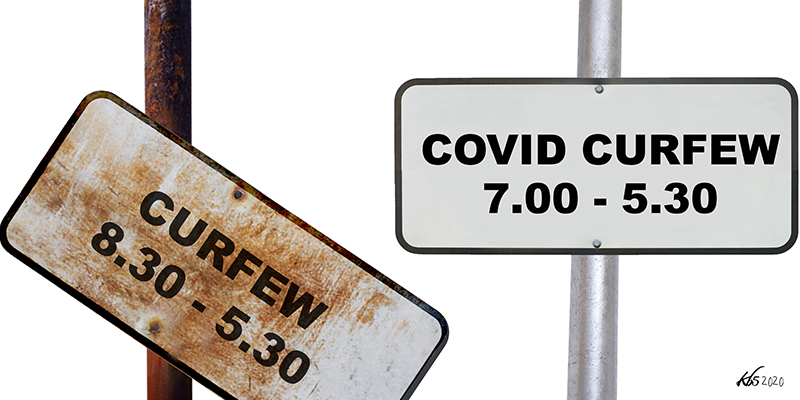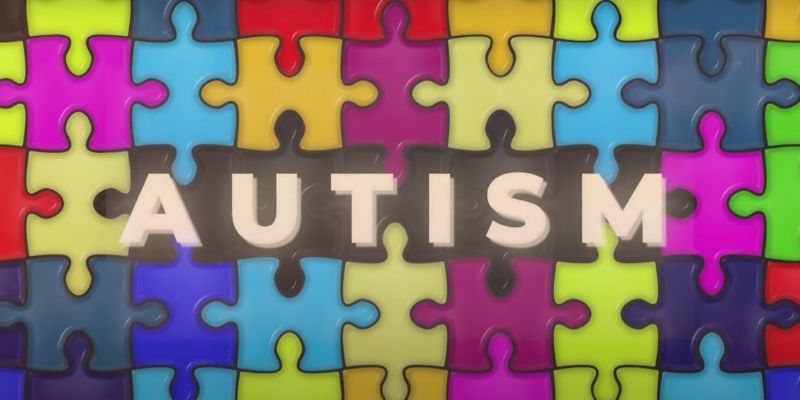States have responded to the outbreak of COVID-19 with a raft of measures depending on their capacities and the opinions of their functionaries. Some countries have also imitated or “adopted” the containment measures rolled out by their counterparts elsewhere.
By and large, the common denominator of these responses has been curtailment of freedom of movement through lockdowns and curfews. Curfews are normally put in place to limit freedom of movement for security reasons. However, in the context of a public health emergency like the COVID-19 pandemic, they are designed to contain the movement of persons and that of pathogens among them.
In the wake of the global COVID-19 pandemic, Kenya has put in place dawn-to-dusk curfews to contain the spread of the virus. (A recent executive directive has changed the hours to from 9 p.m. to 4 a.m.) Unfortunately, the positive intentions of the curfew notwithstanding, there have been widely reported cases of police brutality in its “enforcement”.
While on the surface the idea of curfews sounds benign and even necessary, the attendant state violence that has been witnessed in different parts of the country is always met with public resentment. For the people of Northern Kenya, in particular, it stirs up painful historical and recent memories of military and police abuses in the region.
It is worth noting that the foundation of Kenya was inextricably linked to epidemics and later some form of curfews (kafio in local parlance). Historically, colonialism imposed itself in the region in the aftermath of the rinderpest epidemics between the 1890 and 1891 that devastated livestock (the mainstay of pastoralism) and wildlife across much of Africa.
With the advent of colonialism, the region that came to be identified as the Northern Frontier District (NFD) constituted around half of Kenya’s land mass. This mainly arid area populated by nomadic pastoralists was treated as a buffer to the more “productive” highlands of central Kenya, and was consequently excluded from any form of “development”. The arrival of independence did little to peel back this colonial exclusionary practice; instead, it perfected the marginalisation of the region.
Colonialism as violence
In the pastoralists’ world, mobility is fundamental to economic, political, and ritual reality. Life, and indeed survival, are predicated on movement across the vast landscape, either in search of pasture and water for livestock or simply to perform rituals in a sacred place at appointed times of the year. This movement is not haphazard as some might assume, but is underpinned by a sophisticated understanding and use of space. Movement is a strategic way to maximize the use of the available resources and to conserve the environment at the same time. Imposing other models that curtail movement in the way the modern states do is therefore profoundly disruptive to pastoralism.
With the advent of colonialism, the region that came to be identified as the Northern Frontier District (NFD) constituted around half of Kenya’s land mass. This mainly arid area populated by nomadic pastoralists was treated as a buffer to the more “productive” highlands of central Kenya, and was consequently excluded from any form of “development”.
The establishment of the colonial arrangement of fixed national territories and internally demarcated “Tribal Grazing Areas” fundamentally restricted the mobility of herders and pastoralist communities. When not in conservation rhetoric, this restriction of movement was often framed as a security issue where communities were to be “protected” from raids by other groups. communities from raids by other groups This framework greatly destabilised the pastoralists’ spatial organisation of lives and livelihoods, forcing them to make do with whatever resources that were included in “their” territories.
Closure, lockdown and law
This territorialisation of ethnic groups was affected through a set of draconian laws aimed at keeping people “in place”. Between 1902 and 1949, pieces of legislation were crafted to undergird partitioning of space and ultimately punish the “offenders”. The Outlying District Ordinance of 1926 and the Special Districts (Administration) Ordinance of 1934 are illustrative of this legal regime.
The Outlying District Ordinance declared the whole of the NFD a “Closed District” and prohibited persons from entering or leaving it without the permission of the Provincial Commissioner (PC). Consequently, movement was strictly controlled and depended on the issuance of a limited number of biannual passes.
In 1934, the PC was given exclusive powers under the Special Districts (Administration) Ordinance to grant permission to residents to graze their livestock only in particular areas – a move that tied previously mobile nomadic pastoralists to specifically designated geographical spaces. By pegging communities to particular “grazing areas” and consolidating their identity along grazing lines, “tribalism” was thus greatly promoted during this period.
Furthermore, there was a general apartheid-style division of space not only through Tribal Grazing Areas to distinguish who got to use which pasture areas and wells, but also who got to live where. There was an established separation of black and white areas: the townships were for white colonial administrators and a few Arab and Indian traders, and the reserves (risaaf in local parlance) were for the various indigenous ethnic groups. Those who showed “tribal indiscipline” and who trespassed into “closed areas” or stayed in the township past certain designated hours were slapped with heavy fines.
In 1934, the PC was given exclusive powers under the Special Districts (Administration) Ordinance to grant permission to residents to graze their livestock only in particular areas – a move that tied previously mobile nomadic pastoralists to specifically designated geographical spaces.
The north was also closed off from formal education, with only a handful of government primary schools and no secondary schools in most of the districts. It took the Catholic Church (which came in in the second half of the twentieth century) to transform the health and education sectors by building dispensaries, hospitals, and schools in the region. Prior to that, the Catholic Church had been refused entry to carry out any proselytisation or development work in the region.
War metaphors
War metaphors have recently been invoked in the context of the global COVID-19 pandemic. The fight against the virus itself has been framed as a war. More importantly, past wars have also been invoked to try to make sense of the restrictions around movement and to contemplate the envisaged scale of devastation. The argument is often framed around World War II. The German Chancellor, Angela Merkel’s much praised speech in the early days of the pandemic is an example of this war rhetoric .
Kenya’s former Prime Minister, Raila Odinga, also recently invoked war when he observed, “Today, the whole world stands where Europe was in 1945.” He subsequently went on to urge the United States and Europe “not to abandon their roles” to help other parts of the world just like the United States “saved” Europe in the aftermath of WWII.
It might be worth considering the lingering effects of such global events and many more “small” wars on hitherto small and obscure parts of the globe like the NFD. No place in Kenya has arguably faced the consequences of war more than the northern region. While World War II did not directly affect many parts of Kenya, Kenya was fertile ground for the recruitment of soldiers (askaris) by the British.
What is often forgotten is that the NFD was the scene of military combat. Marsabit was, in fact, a frontier in the Italo- Abyssinian war and World War II. The administrative station in the township, about 300 miles from the Kenya-Ethiopia border, was used by the Royal Air Force (RAF) as one of the main bases for launching attacks on the frontier.
As the situation grew volatile, the colonial administrators were evacuated from the town to central Kenya and the few traders in the township, mainly Somalis belonging to the Isaak and Herti clans, also fled to other parts. The local “native population” was subsequently evacuated from the town to a plain known as Diid Wachu as a measure against aerial raids. The local airstrip was subsequently bombed by the Italian forces but fortunately there were no casualties. All this is recounted within living memory of older residents of the region as “gaaf taliana” – the time of the Italians.
Post-WWII exclusion
The State of Emergency in the early 1950s in response to the Mau Mau insurgency in central Kenya exacerbated the movement restrictions already in place in northern Kenya. Within a few days of the declaration of the State of Emergency, the first political detainees – Jesse Kariuki and Ex-senior Chief Mbiu Koinange – arrived in Marsabit. By 1952, three of the “Kapenguria Six” – Richard Achieng Oneko, Fredrik Kubai and Bildad Kagia – were detained in Marsabit and attended the court sessions in Kapenguria. According to colonial reports at the Kenya National Archives, by the end of 1952, there were a total of ten political detainees in Marsabit.
That the political detainees were shuttled off to the north during the emergency was underpinned by this warped and prejudiced colonial view that the north is a punishing place.
The words of one former colonial administrator, Charles Chevenix Trench, best characterise this view:
“The north was another world. Most of the country is scrub-desert, every tree and bush bristling with hooked ‘wait-a-bit’ thorns, which tears at flesh and clothes. One can seldom see more than three hundred yards, often much less. There was no permanent water except for the Uaso Nyiro, Tana and Juba rivers, the Lorian swamp, and a few clusters of deep wells. It was a country in which small forces were ambushed and cut up, large forces suffered cruelly from hunger and thirst, and both lost their way.” (1993:48)
Exiling the detainees to northern Kenya essentially meant consigning them to an “open prison”, in the colonial mental cartography.
The politics of independence
In the background of negotiations for Kenya’s independence there was the lingering question of the fate of the Northern Frontier District (NFD): Should the region be part of Kenya or Somalia? This question generated a fierce debate. Kenya wanted the NFD to be part of Kenya, and Somalia wanted the region to form part of Greater Somalia that would include the Ethiopian Ogaden, British Somaliland, the former Italian Somaliland, and Djibouti. This was given a further impetus in 1960 when British Somaliland and Italian Somalia joined to form the independent Republic of Somalia.
To resolve the issue, in typical British fashion, the Colonial Secretary, Regiland Maulding, formed the Regional Boundaries Commission in 1962. The same year, the committee recommended that the predominantly Somali-inhabited areas should remain as part of Kenya as the North Eastern Province. This was despite the fact that a referendum had shown that most of the inhabitants were in favour of joining Somalia. To solicit for their opinion in a plebiscite and not honouring the community’s response was a recipe for fomenting resentment.
Subsequently, the region boycotted the 1963 elections to select the government that would take over from the British after independence on 12 December. With the backing of the regime in Mogadishu, the region started an armed insurgency to secede from Kenya. The newly independent Kenyan government responded by declaring a State of Emergency in northern Kenya on 28 December 1963, only two weeks after independence. This would later precipitate the Shifta War between 1963 and 1968.
The so-called Shifta War
The trigger for the declaration of the State of Emergency was the assassination of the first African District Commissioner, Mr. Daudi Dabasso Wabera, and the Senior Chief, Haji Galma Dido. As part of the State of Emergency, the government issued a series of regulations and administrative edicts: all the residents of the NFD were required to register and carry identity papers. Curfew orders, movement restrictions, and livestock seizures (as a form of collective punishment) were imposed to curtail Shifta activity.
Further, the security forces could arrest and detain any person without a warrant for 28 days. This further cemented securitisation of the relationship between the people of the region and the Kenyan state and automatically transferred the burden of proof of whether the people of Northern Kenya were Shiftas.
To inflict further misery on the people, in 1966 the government introduced a forced villagisation programme for residents of NFD. Villagisation was predicated on the classic counterinsurgency principle that the centre of gravity in an insurgency rests with the population, and once the insurgents are starved of the population’s support, food and logistics, they will eventually be uprooted.
This meant a scorched-earth policy of collective punishment of the population that included torture, extrajudicial executions, especially of men, and destruction of the livestock economy. (Some draw a direct link between the region’s current poverty and the destruction of the livestock economy by the security agencies during this period.)
Regarding villagisation in the NFD during the Shifta period, G.G Kariuki, the then Minister for Internal Security, told Parliament, “We do not want to be told that there are loyal Somalis, let loyal Somalis come out and show us their loyalty. Let them be put in a camp where we can scrutinise them and know who [amongst them] are good.”
To inflict further misery on the people, in 1966 the government introduced a forced villagisation programme for residents of NFD. Villagisation was predicated on the classic counterinsurgency principle that the centre of gravity in an insurgency rests with the population, and once the insurgents are starved of the population’s support, food and logistics, they will eventually be uprooted.
Central to villagisation (in addition to the cessation of free movement of people and livestock) was an attempt to turn the people of northern Kenya away from pastoralism towards settled agriculture. At the heart of this mindset is the false dichotomy that pastoralism is bad and settler agriculture is good. This was affirmed by the first post-independence development policy, Sessional Paper Number 10 of 1965, on African Socialism and its Application to Planning in Kenya.
While the 1952 State of Emergency declared by Governor Everlyn Baring and the Mau Mau rebellion tend to get plenty of attention within Kenya’s historiography, the same cannot be said of the Shifta War, despite the uncanny resemblance and parallels of the colonial British policies and modus operandi and the way the Kenyan government dealt with the Shifta insurgency.
Parallels between Mau Mau and Shifta
The post-independence administrators, many whom had served in the British colonial administration, saw a parallel between the Mau Mau and the Shifta. For them, the only way to deal with an insurgency was to use the colonial playbook on the Mau Mau. The Kenya Truth, Justice and Reconciliation Commission (TJRC) stated, “This villagisation programme was eerily reminiscent of the detention camps created during the colonial period.”
The government not only committed the crime but went further and attempted to conceal it. According to the TJRC, “The Kenyan government made a deliberate and concerted effort to cover up abuses committed in connection with the conflict, and enacted the Indemnity Act in order to protect government officials for accountability for wrongful acts committed in the conflict.”
In the local history, this period is collectively memorialised as Gaaf D’aaba – When Time Stopped i.e. when the normal rhythm of nomadic movement was stopped, and people and animals were detained in conditions similar to concentration camps. (The State of Emergency in NFD was only lifted in 1991, 23 years later.)
To demonstrate the premeditated nature of this crime, individuals involved in this operation were immune from prosecution by the passage of the Indemnity Act Cap. 44. This Act gave provincial administrators and security officers immunity from prosecution for anything they did in northern Kenya.
In the local history, this period is collectively memorialised as Gaaf D’aaba – When Time Stopped i.e. when the normal rhythm of nomadic movement was stopped, and people and animals were detained in conditions similar to concentration camps.
This was not the last time the people of northern Kenya had to contend with the state’s brutality anchored in curfew. Indeed, the hegemonic legal and documentary practices that were used for the control of movement have been salient in much of northern Kenya’s experience under both the colonial and independent administration. The handing over of advisories from one colonial administrator to another had it that: “The great thing about the N.F.D. is that almost everything is illegal, unless it is specifically authorised in writing.”
It might as well have been a piece of advice the Kenyan post-independent state got from its colonial counterpart as the passbook introduced during the colonial period (abandoned in other parts at independence) continued to be a requirement in the NFD as late as the 1980s, more than two decades after independence.
More assault
For four days in February 1984, Wajir County, then a district, was turned into a war zone when members of the Kenya Army burst into homes, raping women, destroying property, and seizing the men. Men from the Degodia clan, and anyone caught up in the search, were ferried to the Wagalla airstrip. Once they arrived at the airstrip, they were undressed and forced to lie on the scorching ground. Those who resisted were shot on the spot. They were kept there without food or water, baking in the hot sun.
To emphasise the gravity of the crime, the TJRC stated that the detention, torture and killing of male members of the Degodia clan at the airstrip, and the rapes, killing of livestock and burning of homes in the villages “was a systematic attack against a civilian population and thus qualifies as a crime against humanity”. Like other previous operations, the Kenya Army also targeted the economic backbone of the community, namely, pastoralism. The Kenya Army killed livestock indiscriminately.
To date, there is no accurate official number of people killed during what is now known as the Wagalla Massacre. The government’s claim of only 57 deaths is preposterous considering that hardly any household was spared during that “operation” by the Kenya Army. In fact, the government frustrated the TJRC by denying them access to the official record of the operation. The TJRC, in its 2013 report, refuted the official figure by stating: “The official death toll for the Wagalla operation has been given as 57. While it is clear that the death toll was greater…the government has never officially revised the figure of 57.” The TJRC concluded that the scale of the massacre ranged from between 1,000 and 5,000 deaths, depending on the source.
To date, there is no accurate official number of people killed during what is now known as the Wagalla Massacre. The government’s claim of only 57 deaths is preposterous considering that hardly any household was spared during that “operation” by the Kenya Army.
The Kenyan state was so keen so suppress any information about the massacre that it declared Dr Annalena Tonelli, an Italian health activist who worked in Wajir, and who had documented the massacre, persona non grata. Were it not for the brave efforts of this woman who compiled a report and handed it over to an American diplomat, Barbara Lefkow, few would have known about the scale of the atrocities committed by the state at the Wagalla airstrip.
The “War on Terror”
When confronted with a policy challenge, especially in northern Kenya, the default setting of the Kenyan state is to use the security agencies with an express permission to cause maximum damage. This approach is ingrained in the national DNA. It is not a bug, but rather a feature of the Kenyan state.
Little wonder then, when Kenya invaded Somalia in 2011, there was a predictable blowback by Al Shabaab inside Kenya. Kenyan security agencies responded to this threat by resorting to the tried-and-tested rule book of imposing curfews and carrying out extrajudicial executions and disappearances of Al Shabaab suspects. This despite the Prevention of Terrorism Act and many other legislations that could have been used to counter terrorism.
On 2 April 2014, following a spate of attacks by Al Shabaab, including the dramatic attack on the Westgate mall in Nairobi in September 2013, Kenya launched Operation Usalama Watch. The logic of the operation was to smoke out homegrown Al Shabaab and their sympathisers living in the Nairobi neighbourhood of Eastleigh and its surrounding areas, which is dominated by ethnic Somalis.
During the operation, more than 4,000 people, a large proportion of whom were Somali refugees, were arrested and detained at the Kasarani Stadium with utter disregard for the rule of law. While indisputably facing security threats emanating from Somalia, especially from Al Shabaab, the rounding up all ethnic Somalis, including children, was flagrant racial profiling akin to collective punishment of the entire community for the crimes of a few.
There is a direct line linking the classifications of Somalis as Shiftas and now terrorists. Like previous massacres and egregious violations, predictably, no one was held accountable for this, despite the eerie similarity to what the British colonial administrators did to suspected Mau Mau fighters.
Historical memory
Among other sentiments, curfews related to COVID-19 have elicited historical memories of state-sanctioned violence and curfews in the country. Curfews in Nairobi and Nanyuki following the 1982 attempted coup come to mind.
However, no place in the country has been more affected by state-sanctioned brutal curfews, lockdowns, and policing of bodies than northern Kenya. In fact, there are generations of northern Kenyans who have known nothing else. As an old man from Isiolo quipped in a narration to one of the authors, “Ya naaf nuu taat”. They (curfews and police brutality) have become (part of) our bodies – a statement that is emblematic of the palpable resignation that many northerners feel regarding restrictions of movement forced upon them by an all-too powerful and hostile state.
While closure, containment and curfews – and the attendant state violence – have been a central feature of life in northern Kenya for over a century, these egregious violations have not found closure, even after the release of the TJRC report and recommendations on ways to rectify historical injustices.








